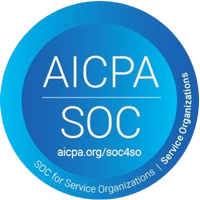Losing candidates and not sure why? Sometimes, when you’re focusing on filling empty roles and combating staffing shortages, it can be hard to zoom out and see the bigger picture. Due to staff shortages and high turnover, many healthcare organizations need to hire more rapidly than ever before . The urgent and fast-paced nature of healthcare hiring means that it can be easy to make hiring mistakes.
Here’s what you may be missing.
1. Avoiding Automation
You’re already using digital tools: job boards, email, and texting. It’s far easier to manage these tools and take recruitment to the next level when you use automation. When you automate manual tasks, such as interview scheduling and acknowledgement of received materials, you save time and reduce error. Getting bogged down in easily automated tasks is a major mistake in healthcare hiring, where time is of the essence.
Learn how to automate workflows here.
2. Allowing Too Much Time to Pass Between Hiring Stages
Every stage in your hiring process is a step towards finding your ideal candidate, but it’s also an extra moment when you might lose contact. You might be surprised to hear that over 70% of job seekers will pick their second-choice offer if their top company doesn’t get back to them in a timely manner.
One way to speed up your hiring process is by using automation. Another way is by following up with candidates quickly between hiring stages. You can do this by adding texting to your hiring process so you can stay connected with candidates no matter where they are.
3. Not Having a Recruitment Strategy
When you’re facing a staffing shortage, like the one affecting healthcare organizations, it can be tempting to hire at volume without a defining strategy. After all, creating a recruitment strategy takes time, and that might feel like a luxury you can’t afford. Speed is important, but taking the time to create a recruitment strategy can help you hire smarter and improve retention in the long run.
Recruitment strategies can cover everything from the open positions you want to prioritize to your standardized interview process and the types of benefits you’d like to highlight. Not sure where to begin? Consider a recruitment audit to better understand your current process and find areas to improve.
4. Sourcing All Your Candidates From One Place
Using one primary job board can seem like it’ll save time, but you’re actually missing out on candidates who could help you fill your open roles faster. Using a diverse selection of job boards (including healthcare-specific ones), soliciting employee referrals, and sourcing candidates from your own in-house training programs can help you build a diverse staff (and hire more quickly).
Mix digital and traditional recruiting for the best results, with in-person hiring events, radio ads, flyers, and more. Interested in more tips and tricks? Check out our post on how to source candidates.
5. Failing to Incorporate DEI
Even if you have a strong diversity, equity, and inclusion (DEI) policy for fair pay and internal promotions, that doesn’t always translate into your hiring process. It’s important to reduce the impact of bias (including unconscious bias) throughout the hiring process. Having multiple eyes on your recruiting materials can help make your hiring process more exclusive, since it’s hard for one individual to fully assess the big picture.
Inclusively-worded job descriptions, carefully thought-out interview questions, DEI commitment statements, and training for your hiring managers can all be part of a recruitment DEI initiative. Pay transparency can also help you stand out and mitigate the very real effects of gender and race-based wage gaps. Here’s a resource to help you learn more about inclusive hiring
6. Not Spending Enough Time on Company Culture
Company culture is more important than you might imagine. In fact, according to LinkedIn, 40% of professionals prioritize colleagues and culture when deciding to accept a position.
Company culture can be hard to define, but usually consists of respect, physical and medical safety, work-life balance, growth opportunities provided to employees, social events, employee appreciation, and more. Many companies have core values that they use to guide their cultural goals.
Don’t make flash judgements about someone’s cultural fit, as these can come from unconscious biases. Take time to share what makes your workplace special, and allow candidates ample time to respond.
Learn how to conduct better interviews.
7. Not Taking Advantage of Employee Referrals
According to CareerBuilder, 82 percent of employers state that employee referrals have the best return on investment for recruiting. In addition, 88 percent of employers stated their best candidates came from referrals, as opposed to other methods of recruitment.
Employee referrals are a powerful tool for hiring managers, and shouldn’t be ignored. Offering bonuses for employees who successfully refer new hires can also help boost morale. Usually employees will only refer candidates who they think would be a good fit for the position, so these candidates tend to have a higher success rate.
8. Writing Misleading Job Descriptions
Here’s an interesting statistic: while 72% of hiring managers claim that they provide “clear job descriptions,” only 36% of candidates agree. There’s clearly a discrepancy between how hiring managers and candidates see job descriptions.
Sometimes, job descriptions can be misleading unintentionally. Maybe the role has changed somewhat, and you’re still using older descriptions. Update your job descriptions and tailor them to the job board you’re using for the best results.
9. Relying on Paper Files
Sure, it can take some effort to transport a paper-based system to a fully digital hiring process, but it’s worth it. When your information is stored in physical files, you run the risk of increased errors, a slower hiring process, and a messy storage system.
With digital hiring, you can streamline your process and greatly reduce mistakes. Candidates will also appreciate their own ease of access, as they’ll be able to communicate quickly and view their materials. They’ll also be able to fill out their onboarding documents faster and more efficiently.
Learn more about effective and user-friendly digitization here.
10. Losing Focus on Retention
Retention is crucial. When you improve retention, you can also spend more time on your hiring decisions. In other words, it’s easier to find your ideal candidate when you’re not overwhelmed with trying to fill an unreasonable number of vacancies.
Focusing on hiring and retention simultaneously can help you work smarter, not harder. And ultimately, there’s nothing better for both recruiting and retention than living up to your promises, paying fairly, and protecting your workers. Retention begins with hiring. Avoid these hiring mistakes, and you’re on the right track.
Better Hiring With Apploi
With automation and streamlined hiring, Apploi can help you build your ideal team quickly. Interested in learning more about how you can recruit, hire, and onboard healthcare staff quickly? Contact us today for a free demo of our end-to-end talent management solution.




